Monastery of Sao Vicente de Fora
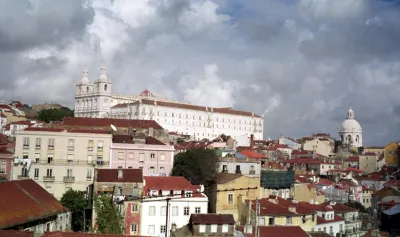
Imposing 17th century monastery overlooking Lisbon. Built in the Mannerist style the monastery's Pantheon contains the tombs of the House of Braganza.
Museu Militar de Lisboa
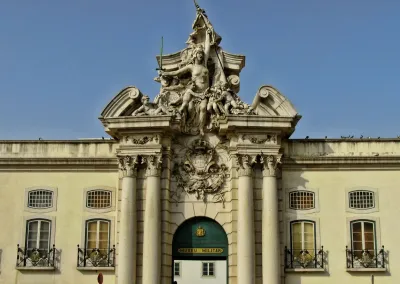
The Museu Militar (Military Museum) in Lisbon is located below the Alfama on the site of a 16th century foundry where amongst other things cannons were cast. Many of the weapons on display now significantly predate these; medieval weapons such as maces, crossbows and lashes; 14th century mortar cannons. The museum's star exhibit is the two-handed sword of Vasco da Gama which stands as tall as a man.
There is a considerable collection representing the 'age of chivalry' with many suits of amour which would have been custom made for the crusading knights and their horses.
National Pantheon
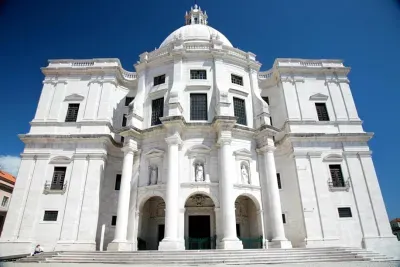
The 17th century Church of Santa Engrácia with its huge dome was designated the National Pantheon in 1966. Within are buried many of Portugal's presidents and cultural icons
Lisbon Cathedral

Reputed to be the oldest building in Lisbon, the cathedral (Sé de Lisboa) certainly has the appearance of being built to last. Compared to the frivolous Manueline architecture of the Jeronimos Monastery the Romanesque lines of the cathedral appear quite austere. Along with castellated walls and arrow slits in the towers Lisbon Cathedral, like other Portuguese cathedrals of the period, had the appearance of a fortress as much as a church.
Igreja de Santo António
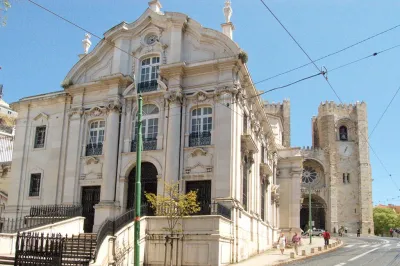
Saint Anthony is Lisbon’s main patron saint and this church, dedicated to his memory is thought to have been built on the exact spot where he was born in 1195.
Castle of Sao Jorge

Set in a commanding position overlooking Portugal's capital, the Castelo de São Jorge dates back to Moorish times. The existing citadel is mainly medieval and contains the ruins of the royal palace and gardens
Igreja da Conceição Velha
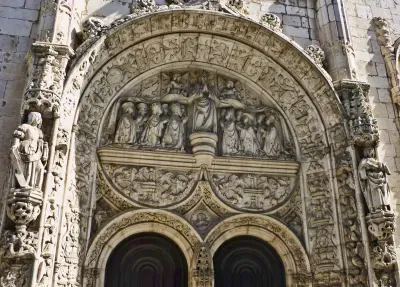
Built around 1500 on the site of an ancient synagogue, and also known as Our Lady of the Conception, this was once the second largest place of worship in Manueline Lisbon. Nowadays this historic church, with an ornate façade reminiscent in style and grandeur of the Jerónimos Monastery in Belém, seems to be sandwiched between two more pedestrian buildings down a largely overlooked street. But therein lies the story of this building.
Lisbon Tram Number 12
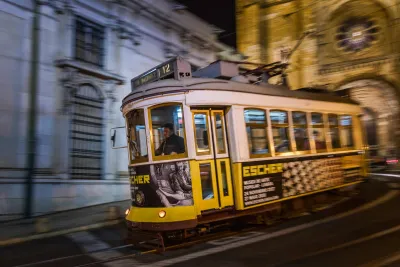
It only takes around 20 minutes to complete the full circuit of Lisbon’s number 12 tram route, but climbing into one of the iconic, yellow Remodelado coaches can be a fun way of getting to see the Baixa and Alfama districts and taking in sights such as the Se Cathedral and St Anthony’s Church.
Arco Triunfal da Rua Augusta

Positioned on Praça do Comércio and acting as a grand opening onto the Baixa's central Rua Augusta, this ornate and imposing archway is also known as the Rua Augusta Arch.
As the name hints, the Arco Triunfal was originally built to commemorate Lisbon’s reconstruction following the devastating earthquake in 1755, although the version that exists today dates from 1875.
Praça da Figueira

Praça de Figueira is a large square in the centre of Lisbon, one of three in the Baixa district. The name translates as fig tree square, although there is little sign of the original trees. The square was created in the 18th Century after the Lisbon earthquake of 1755 had destroyed the buildings that had stood on the site beforehand (as well as much of the rest of the city). It had previously been the location of Lisbon’s main hospital; the Real de Todos os Santos.